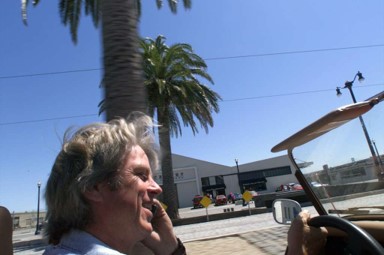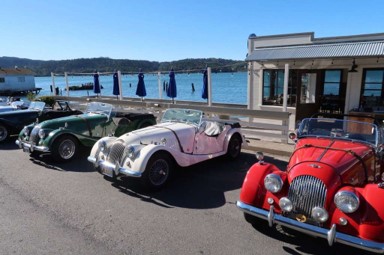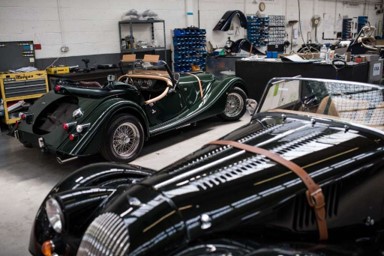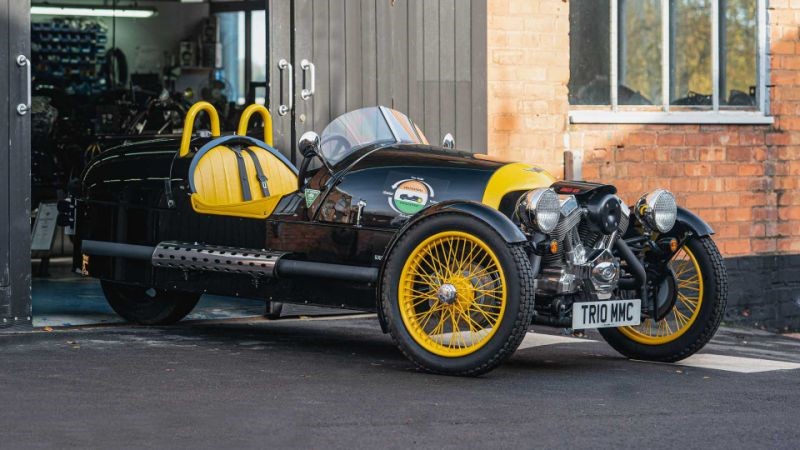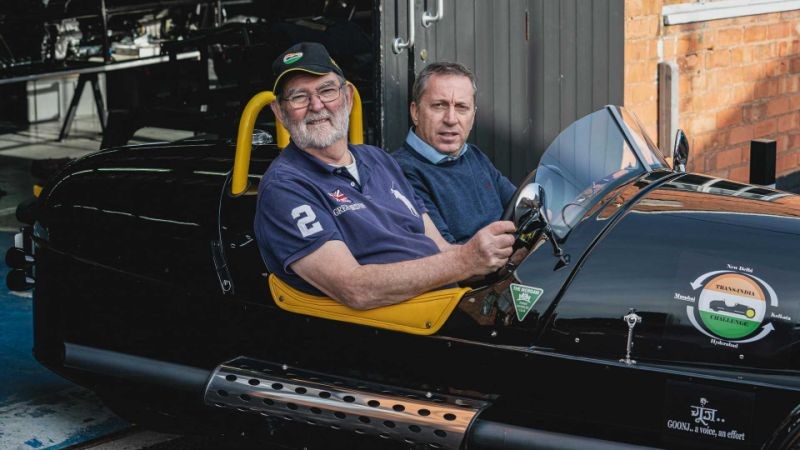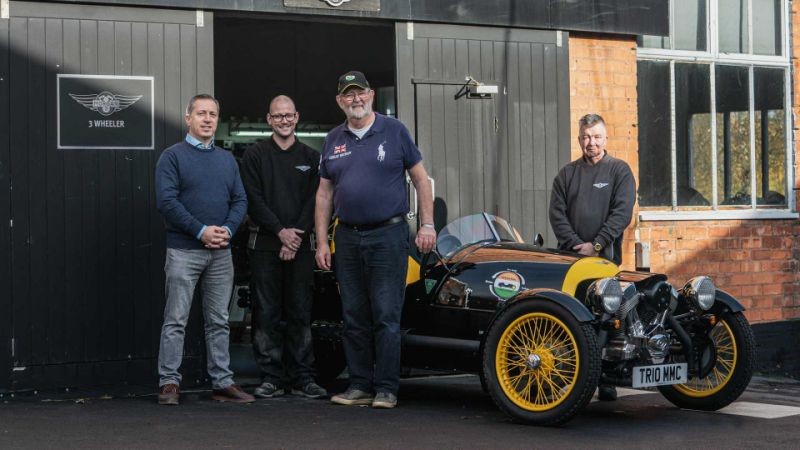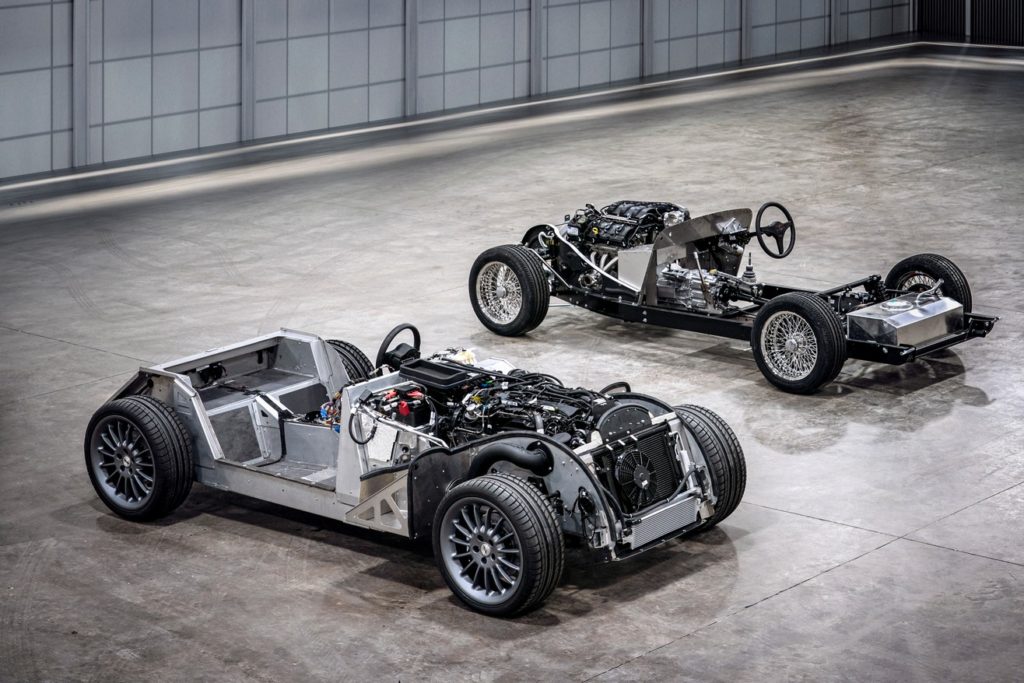The Truth About Car Paint Sealant (https://avalonking.com/)
You can argue the pros and cons of automotive paint sealants, compare it to waxes, and staunchly defend your favorite brand. We all have our opinions, however. . .
In my opinion, one of the most compelling reasons to use a paint sealant on a Morgan in MOGSouth is protection. In many of our locations, our cars are subject to extremes. It is frequently hot!! With the sun baring down on our cars, unmercifully. Our cars need as much protection as we can give them.
Another strong motivator for using a sealant is time. Our Morgans are not typically our only cars, nor are they our only commitments. We have other cars that need to be addressed (and other things that take up our discretionary time) so we can continue to work, eat, shop, etc. Spending all day, every day, playing with our Morgans is not always possible. We need products that last.
Another thing I like about paint sealants is they seem to be slicker than waxes. That means the unavoidable ‘dirt and grime’ that seem to be ‘magnetically’ attracted to my Morgan, doesn’t stick. The car stays cleaner, longer. And for me, that is a good thing! Cheers, Mark
In the automotive world, there is always a middle ground. Whether you’re buying a new car, or looking for paint protection products, our industry is packed with multiple options to fit consumers growing needs or limited budgets. When it comes to protecting your car’s paint, a popular mid-level product is a car paint sealant.
Automotive paint sealants are mainly manufactured and sold by the same companies that produce car wax and polishes. They are often designed to provide a thin layer of protection that prohibits contaminants and UV rays to penetrate to the clear coat.
And like any other paint protection or car care product, there are some paint sealants that are really good – and some that are just simply – crap.
With the multiple products out there, it’s common to find some less than honest marketing lingo that oversells what they can and can’t do. So, in order to provide some clarity or just some simple facts, we’ll dive into the truth about car paint sealant.
We’ll define what car paint sealant is and what it’s made from, explain what it is designed to do, how they are applied onto a vehicle, some pros and cons about them, and finally, we’ll answer some of the most common FAQ’s.
So, let’s dive into some car paint sealant facts.
What is Car Paint Sealant?
If you’re familiar with car wax and polish, then you may have met it’s older, and longer-lasting cousin – car paint sealant. It’s usually made from synthetic ingredients, polymers, and car wax to allow it to last longer. It’s designed to protect the paint from exposure to UV rays and contaminants and usually lasts up to six months.
Why is the Car Paint Sealant Important?
Many car owners choose car paint sealants as a longer-lasting alternative to car wax and polish. But it also produces results far superior to these two products. There are a few reasons why this product is quickly becoming a top seller in the paint protection market.
It provides a deeper depth of paint
Car paint sealant typically creates a deeper or high gloss finish on when applied to paint in good condition. So, not only does it protect, but it enhances the natural shine.
It protects paint longer than wax
Car wax (usually the natural carnauba wax) will last about 6 weeks. Some synthetic car waxes can last up to 3 months. A car paint sealant which is made from polymer technology and synthetic ingredients will last from six to 10 months.
Provides stronger protection
Some harsh contaminants like acid rain, bug splatters, and bird droppings contain strong acidic levels. These items can penetrate basic car wax and cause damage to the clear coating. Car paint sealant is stronger, long-lasting and protects the paint from these harmful contaminants.
Increases the vehicle’s resale value
When a car owner uses car paint sealants it helps to protect the clear coating (?), which preserves the paint quality – and also the resale value when you trade in the vehicle.
Makes it easier to wash and dry a vehicle
Paint sealants have very good hydrophobic properties. Like a ceramic coating, they resist the collection of standing water, dirt and debris, which makes it easier to wash and also dry the car.
How to Apply Car Paint Sealant
Since these products are similar in their ‘construction’ to liquid car wax and polish, they are usually applied in a similar fashion. Generally, auto detailing experts agree that there are two basic ways of applying the best car paint sealant products:
Hand Application
The hand application method of a paint sealant is virtually identical to car polish. In fact, many consumers will apply a paint polish first, then apply a car polymer sealant on top. This helps to improve the luster and shine of car paint. Essentially, applying car synthetic sealant follows a three-step process:
Prep the vehicle
The prep work for applying car paint sealant simple. Just wash the car using the two-bucket method and apply an IPA spray solution to remove any small particles or contaminants.
Apply the sealant
Applying the actual paint sealant is also easy. Using a microfiber applicator sponge, apply a dime-sized drop of the product and rub it on the paint surface in a forward or vertical pattern. Don’t use a circular motion so you can avoid paint swirls. While the video above shows the guy doing the entire hood, for optimal results, stick to applying in a 2 x 2-foot section.
Buff
Once you’ve applied the product, and it’s dried, test the product by rubbing your thumb over it. It should ‘haze’ and wipe clean. Just buff the paint surface with a microfiber towel.
Machine Application
The machine application is another method of applying automotive paint sealants. It’s essentially the same process as described above but increases the potential of swirl marks. The key to reducing swirl marks is making sure the paint surface is 100% clear and free of microscopic imperfections.
If you’re going to use the machine method, you should probably complete extra prep work, such as using a clay bar treatment before the IPA spray solution.
Are Paint Sealants Worth It?
Determining whether a paint sealer is ‘worth it’ really breaks down to your personal comfort level, desire to keep your vehicle protected, and your pocketbook.
That being said, here are a few of the Pros and Cons of using a paint sealant to protect the paint surface of your ride.
Paint Sealant Pros
- Simple
to Use
- As we described above, applying paint sealants are incredibly simple. You don’t need a detailer to apply it. It’s not a one-step product like some people think. But, it’s really easy. Just prep the paint, rub it on, let it dry, and wipe it off.
- Combines
with polishes and waxes
- You also don’t need to remove waxing or polish jobs before applying a paint sealant product. In fact, many people use them all in conjunction. And many makers of these products combine a car sealant and polishes into an all-in-one solution.
- Produces
a shiny appearance
- When you apply a synthetic polymer sealant to a properly prepped and clean paint surface, it will produce a very shiny or glass-like appearance. It also helps to reduce road grime from sticking.
- Longer
lasting than car wax alone
- Most good paint sealant products will hold up for up to six months. There are a few pro-grade car paint sealants that can produce lasting protection for almost a year, but it comes at a premium cost.
Paint Sealant Cons – While there are some positive attributes of paint sealant products, they are not perfect. Here are a few items to consider before you fork over your hard-earned money.
- Highlights
imperfections
- Very similar to a ceramic coating, a paint sealant will highlight any paint imperfections on the clear coating. If you have swirl marks, the paint sealant will make them look larger and more detailed. To combat this, most car owners have paint correction completed by detailers prior to using this type of product.
- Needs
more prep work than car wax and polish alone
- The Paint surface needs to be very clean to allow paint sealants to adhere to the surface well. While you don’t need to strip wax or use a polisher, it’s important to clay bar treat the surface at the minimum for optimal results.
- Hard
to remove
- If you’re wanting to remove a car paint sealant, you’ll have to look for and purchase a specialty automotive soap. These products are developed to strip paint sealants and car wax products, so it will completely remove everything in most instances. It can also take a few attempts to fully remove.
- Middle-level
paint protection solution
- We talked about the range of product options in the automotive world in the intro. Well, paint sealants are that middle ground. Are they easier to apply than a ceramic coating? Yes, they are. However, they last about 1/8th the expected longevity of a ceramic coating.
When Should You Use Car Paint Sealant?
By no means do I believe that car paint sealants are not good. In fact, there are times when I’d suggest using a car paint sealant above a ceramic coating as a paint protectant.
Some of the best situations where a car paint sealant is your best option to protect your paint finish include:
Perfect for daily drivers on a budget
If you’ve recently purchased a newer car, and you’ll be spending a lot of time commuting highways, a car paint sealant is a good, entry-level product. While I’d personally use a ceramic coating, some people just don’t want to put the time and effort to prep or pay a professional to do it for them. In this case, a good paint protection option is a good car paint sealant.
Great for winter or extremely hot weather areas
If you live in Florida, Georgia, or Mississippi, or Alabama, and again, don’t want to put the effort or make the financial investment for a ceramic coating, a paint sealant to protect auto paint from exposure is a good alternative.
If the car paint is in good condition
We indicated above that paint sealants will highlight visible paint damage. So, if the paint is in good condition, and you don’t need to complete paint correction, a paint sealant is a good option.
Car Paint Sealant FAQs
To wrap things up, we ‘ll address some of the most popular car paint sealant FAQs, so we can clarify some common questions.
- Q –
Which is Better – Car Wax or a Paint Sealant?
- A – Beauty is in the eye of the beholder. So, when it comes to determining whether car wax is better than paint sealants, it really breaks down to what’s important for you. A car paint sealant is going to last longer and protect the vehicle about 5-times longer than even the best car wax. However, car wax is not going to highlight paint damage as much as paint sealants, so it might actually make your older car look better.
- Q –
How Long Does Car Paint Sealants Last?
- A – We touched on this above, but most paint sealants will last anywhere from four to six months. There are some professional-grade paint sealants that can extend life expectancy to almost a year. However, these products typically require professional application and will cost a lot more than off-the-shelf products.
- Q –
How Expensive is a Car Paint Sealant?
- A – You can find most car paint sealants at local auto parts stores for $25 to $40. You can also purchase them online on amazon.com and from manufacturer websites.
- Q –
What’s the Difference Between Car Wax and Sealant?
- A – A car wax provides a hard shell of protection that actually gets stronger with added temperature. This is due to the natural carnauba wax ingredients derived from a palm tree in Brazil. A paint sealant is a fully synthetic product that is comprised of polymers that chemically bond onto the paint surface. When they ‘flash’ it provides a stronger layer of protection than car wax – and thus lasts longer than car wax.
- Q –
Can you Wax over a Paint Sealant?
- A – Yes, you can use both products in conjunction. In fact, applying a car wax over sealant may provide an extra layer of protection by filling in smaller imperfections.

